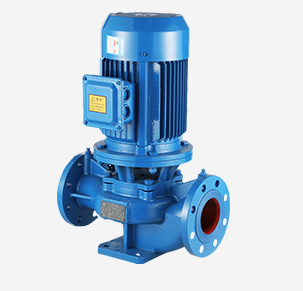Armenian
- Afrikaans
- Albanian
- Amharic
- Arabic
- Armenian
- Azerbaijani
- Basque
- Belarusian
- Bengali
- Bosnian
- Bulgarian
- Catalan
- Cebuano
- Corsican
- Croatian
- Czech
- Danish
- Dutch
- English
- Esperanto
- Estonian
- Finnish
- French
- Frisian
- Galician
- Georgian
- German
- Greek
- Gujarati
- Haitian Creole
- hausa
- hawaiian
- Hebrew
- Hindi
- Miao
- Hungarian
- Icelandic
- igbo
- Indonesian
- irish
- Italian
- Japanese
- Javanese
- Kannada
- kazakh
- Khmer
- Rwandese
- Korean
- Kurdish
- Kyrgyz
- Lao
- Latin
- Latvian
- Lithuanian
- Luxembourgish
- Macedonian
- Malgashi
- Malay
- Malayalam
- Maltese
- Maori
- Marathi
- Mongolian
- Myanmar
- Nepali
- Norwegian
- Norwegian
- Occitan
- Pashto
- Persian
- Polish
- Portuguese
- Punjabi
- Romanian
- Russian
- Samoan
- Scottish Gaelic
- Serbian
- Sesotho
- Shona
- Sindhi
- Sinhala
- Slovak
- Slovenian
- Somali
- Spanish
- Sundanese
- Swahili
- Swedish
- Tagalog
- Tajik
- Tamil
- Tatar
- Telugu
- Thai
- Turkish
- Turkmen
- Ukrainian
- Urdu
- Uighur
- Uzbek
- Vietnamese
- Welsh
- Bantu
- Yiddish
- Yoruba
- Zulu
Telephone: +86 13120555503
Email: frank@cypump.com
Դկտ . 10, 2024 11:30 Back to list
sewagepump
The Importance and Functionality of Sewage Pumps
Sewage pumps play a critical role in the management of wastewater and sewage systems in both residential and commercial settings. These devices are designed to transport sewage and wastewater away from homes and buildings to treatment facilities or sewage processing plants. Understanding the functionality, types, and maintenance of sewage pumps can help homeowners and businesses make informed choices, ensuring their wastewater systems operate efficiently and effectively.
Functionality of Sewage Pumps
At its core, a sewage pump is a type of submersible pump used to move sewage and wastewater. These pumps are typically installed in a sump pit, where they automatically turn on to pump out accumulated water and waste when the level reaches a specific height. Most sewage pumps operate using a float switch, which detects the water level and activates the pump accordingly.
The primary function of a sewage pump is to expedite the removal of sewage from lower areas of a facility, especially where gravity drainage is not feasible. For instance, many basements are below the drainage line, necessitating the use of a sewage pump to lift waste to a higher elevation where it can flow freely to the sewer system.
Types of Sewage Pumps
There are various types of sewage pumps available, each catering to different needs. The most common types include
1. Submersible Sewage Pumps Designed to be submerged in the sewage or wastewater, these pumps are sealed to prevent water infiltration. They are ideal for residential use and are typically used in sumps or lift stations.
2. Effluent Pumps Used primarily for greywater, these pumps handle less solid waste than traditional sewage pumps and are perfect for removing wastewater from showers, sinks, and washing machines.
3. Grinder Pumps These pumps are equipped with a grinder that shreds solid waste into smaller particles, allowing easier transportation through smaller pipes. They are essential in systems where sewage lines are not large enough to handle large solid waste.
sewagepump

4. Centrifugal Pumps These are the standard pumps used for high-flow applications and can handle a variety of solids, making them versatile across different industries.
Maintenance of Sewage Pumps
Regular maintenance of sewage pumps is crucial to ensure their longevity and effective operation. Here are some essential maintenance tips
- Inspect the Float Switch Regularly check that the float switch is functioning correctly to avoid pump malfunctions, which could lead to sewage backups.
- Clean the Impeller Over time, debris can clog the impeller. Regular cleaning will ensure it operates efficiently.
- Check the Seals Ensure that seals are intact and free from wear. Damaged seals can lead to water leaks and pump failure.
- Monitor Pump Performance Regularly assess the pump’s performance to catch any issues early. Unusual noises or decreased output could indicate a mechanical problem.
- Schedule Professional Inspections For comprehensive maintenance, consider scheduling inspections with a professional every few years.
Conclusion
Sewage pumps are an essential component of modern sanitation systems, efficiently transporting wastewater and preventing sewage backups. By understanding their functionality and types, and implementing a regular maintenance routine, homeowners and businesses can ensure the reliability and effectiveness of their sewage systems. Maintaining these pumps not only protects the infrastructure but also promotes public health and environmental well-being. In the ever-evolving landscape of urban planning and development, the importance of sewage pumps cannot be overstated, making them indispensable in contemporary life.
-
ISG Series Pipeline Pump - Chi Yuan Pumps | Energy Efficiency&Compact Design
NewsAug.03,2025
-
ISG Series Vertical Pipeline Pump - Chi Yuan Pumps Co., LTD.|High Efficiency, Low Noise, Durable
NewsAug.02,2025
-
ISG Series Vertical Pipeline Pump - Chi Yuan Pumps | High Efficiency, Low Noise
NewsAug.02,2025
-
ISG Series Vertical Pipeline Pump- Chi Yuan Pumps Co., LTD.|High Efficiency&Compact Design
NewsAug.02,2025
-
Heavy-Duty Mining Sludge Pumps - Wear-Resistant Slurry Handling
NewsAug.02,2025
-
Horizontal Split Case Pump with GPT-4 Turbo | High Efficiency
NewsAug.01,2025










